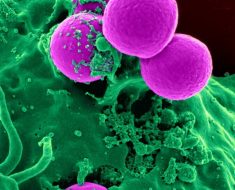Long-term memories rely on both the repetition of events and an intricate neurological learning process in making these memories last, shows a new study by a team of neuroscientists. Its findings provide a more detailed understanding of how these types of memories are formed as well as insights into what may disrupt their creation.
“Repetition is a well-documented trigger for memory formation — the more times something is repeated, the better it is remembered,” explains New York University’s Nikolay V. Kukushkin, the lead author of the study, which appears in the journal Proceedings of the National Academy of Sciences (PNAS). “However, the brain’s machinery is more complicated than that. Our research shows that the effects of individual repeated events interact in more nuanced ways and have distinct roles in working to form long-term memories — neurons can sense not just repetition, but also the order of repeated experiences and can use that information to discriminate between different patterns of these events in building memories.”
“For example, neurons can tell the difference between two events in escalating order of intensity and those same two events in the opposite order, forming a memory only if the intensity increases over time,” he adds.
The researchers, who also included Thomas Carew, a professor in NYU’s Center for Neural Science, and Tasnim Tabassum, an NYU researcher, sought to better understand what lies behind a well-documented neurological process — specifically, that repeated events induce long-term memory where individual events fail to do so.
What has been unclear is how repeated events interact with one another to form a memory.
To explore this question, the scientists studied Aplysia californica, the California sea slug. Aplysia is a model organism for this type of research because its simple memories are well understood at the molecular and cellular level. Neurons that control them can be isolated and studied in a Petri dish, as the study’s authors did here, reproducing all the essential components of memory formation. The researchers “trained” these neurons by applying repeated chemical pulses that replicated Aplysia‘s responses to stimuli, such as mild electric shocks, typically used in experiments. They then monitored the long-term strengthening of connections between the neurons, thereby mimicking and then observing the formation of a long-term memory.
Source: Read Full Article





